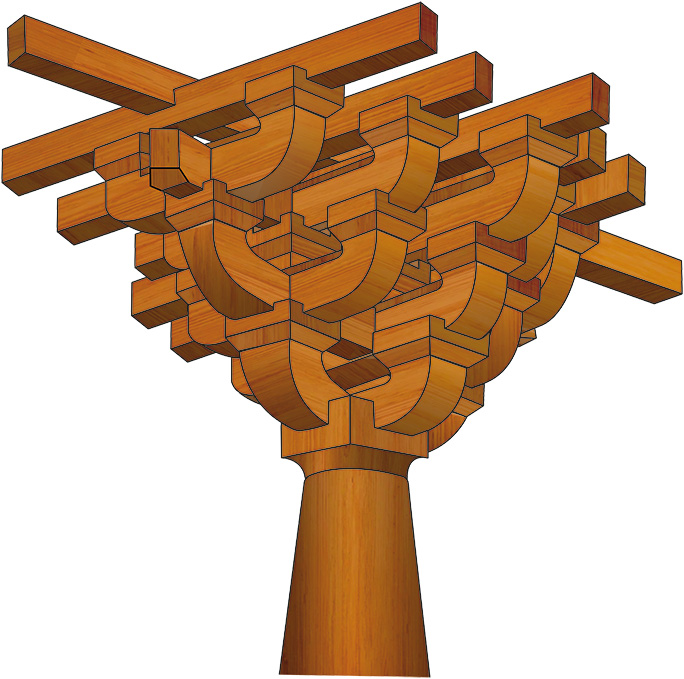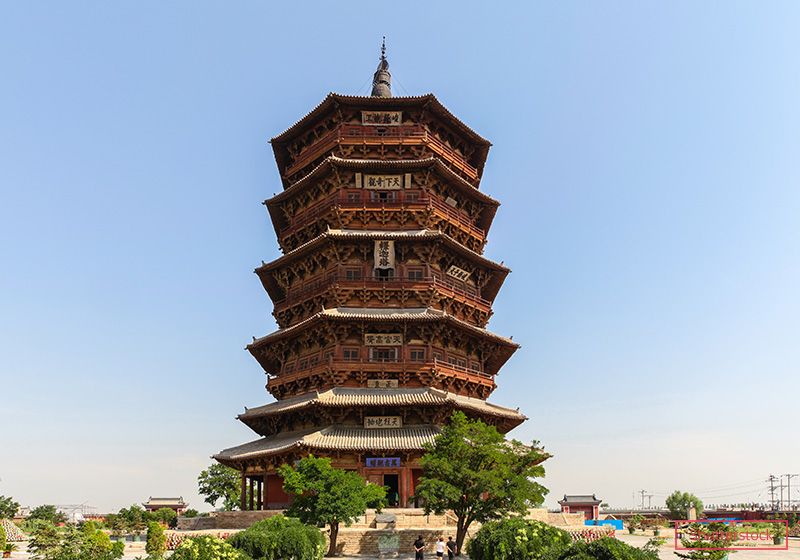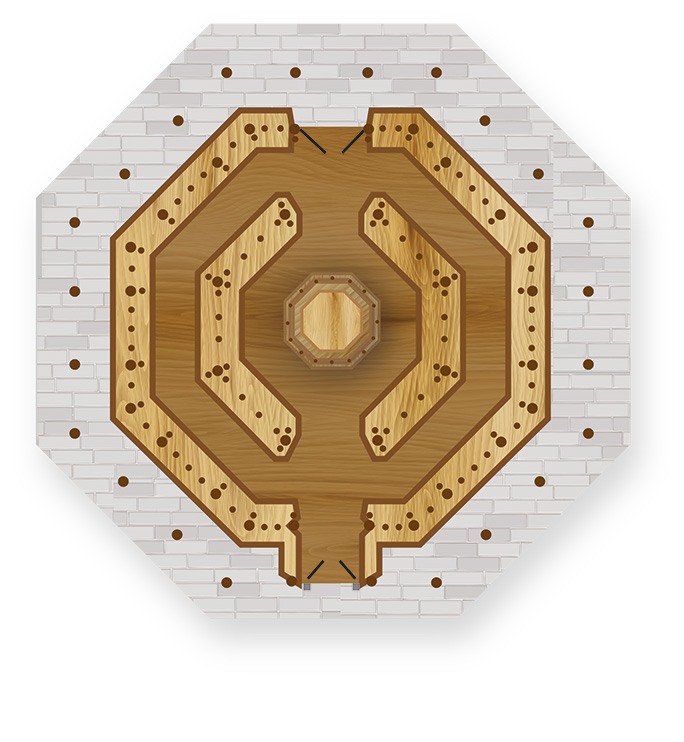
Largest wooden pagoda
Nestled inside the peaceful compound of the Buddhist Fongong temple in Yingxian County, Shanxi Province, the Sakyamuni Pagoda stands tall and proud as one of China’s most famous landmarks.
The imposing monument was erected in 1056 - the second year of the reign of Liao Dynasty Emperor Daozong - and is said to be built on the site of his grandmother’s family home. Incredibly, it was constructed without the use of a single metal nail, yet has withstood centuries of extreme weather and even earthquakes. Inspiring a sense of timeless awe, this incredible architectural jewel is the tallest wooden pagoda in the world.
The majestic timber structure was originally built on a stone platform that stood at 4 m (13 ft) high, while the steeple of the pagoda stands at an incredible 10 m (33 ft) high.
In its entirety, the octagonal-based landmark reaches an impressive 67.31 m (220 ft 10 in), making it one of the most complex man-made ancient structures on earth and the tallest wooden pagoda in the world. According to UNESCO, it is also the oldest multi-storey building in existence.
Despite being considerably shorter than other modern record-breaking buildings, the Sakyamuni pagoda stands out as one of the most interesting buildings of ancient times. (For comparison, the Burj Khalifa (or Khalifa Tower), an inductee of the Guinness World Records Hall of Fame, measures 828 m (2,716 ft) and is the tallest building in the world, featuring a plethora of amenities such as supermarkets, bookstores and luxury apartments).

With its finely decorated facade and interior, it beautifully crafted sloped roof and pinnacle, the valuable paintings it contains, and the complex engineering necessary to build it, the Sakyamuni Pagoda an unparalleled jewel of architecture that transcends time, even more so considering that it survived seven earthquakes in its first 50 years.
This gem of Ancient China is characterized by a majestic octagonal footprint (one of the many new styles incorporated by the Five Dynasties) and, on the first storey, boasts a diameter of 30.27 m (almost 105 ft).
It also features a seven-piece pinnacle that stands 10 m (32 ft) tall.
Placed at the centre of the Fongong Temple grounds and towering over the vast countryside of north China, the Sakyamuni pagoda is an artistic expression of great architectural value.
Under the beautifully decorated ceiling of the Muta (“timber pagoda”), the pillars on each floor slant slightly inward as the plane size diminishes floor by floor, allowing the monument to weather storms and quakes.
The windowless outer walls on the ground floor, as well as the enclosing corridors and eaves, all contribute to further strengthen the stability of the entire building.
This was a long-term engineering choice that proved to be indeed farsighted, allowing the pagoda to stand tall through the centuries, despite the many seismic shockwaves that have rippled through the area.
“According to historical records,” writes the official website of the monument, “the pagoda stood firm during a severe earthquake that lasted seven days, and that occurred during the reign of Emperor Shun of the Yuan Dynasty (roughly 1333-1368).”
“Though the Yingxian County area was affected by the big earthquakes in Xingtai and in the city of Tangshan, northeast of Hebei Province, as well as and in Helinger of Inner Mongolia in recent years, the Wooden Pagoda did not suffer any damage.”
This survival is a testament to the mortise-and-tenon brackets from which the structure is erected - a traditional Ancient Chinese technique that requires no nails to hold the elements together. An architectural and structural marvel.
A 3D model of the pagoda can be useful to understand its incredible balance and sturdiness:
The pagoda's antiseismic strength is a modern-day testament to the achievement of wooden structures and engineering in ancient China.
Apparently unscathed by the decades, the only trace that time has left on the pagoda is that, today, the monument appears slightly titled to one side – not too different from the Italian Tower of Pisa, although the slant is way less dramatic.
Sculptures of crawling lions and several mural paintings adorn the doorway. All showcasing the classic Liao Dynasty style, the decorations depict warrior attendants, heavenly kings, female attendants and Buddhist disciples.
While entering the southern door of the pagoda, visitors are welcomed by a 10-m-high (33-ft) statue of Sakyamuni, aka Buddha, sitting on a throne of lotus flowers.
A much more recent (but not less impressive) pagoda recently entered the Guinness World Records family as the overall tallest pagoda in the world: the modern Tianning Pagoda proudly towers over the city of Changzhou, China, and made history thanks to its ambitious size.
After the construction work started in 2002, it was completed in 2007.
Overall, the 13-storey pagoda stands at an unprecedented 153.79 m (504.56 ft).




